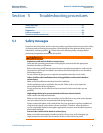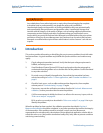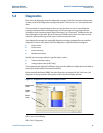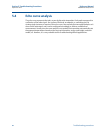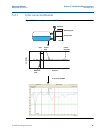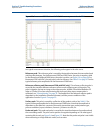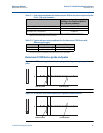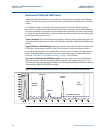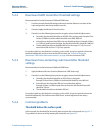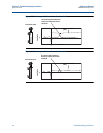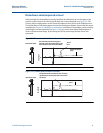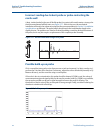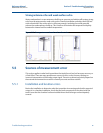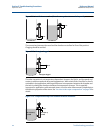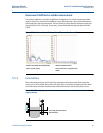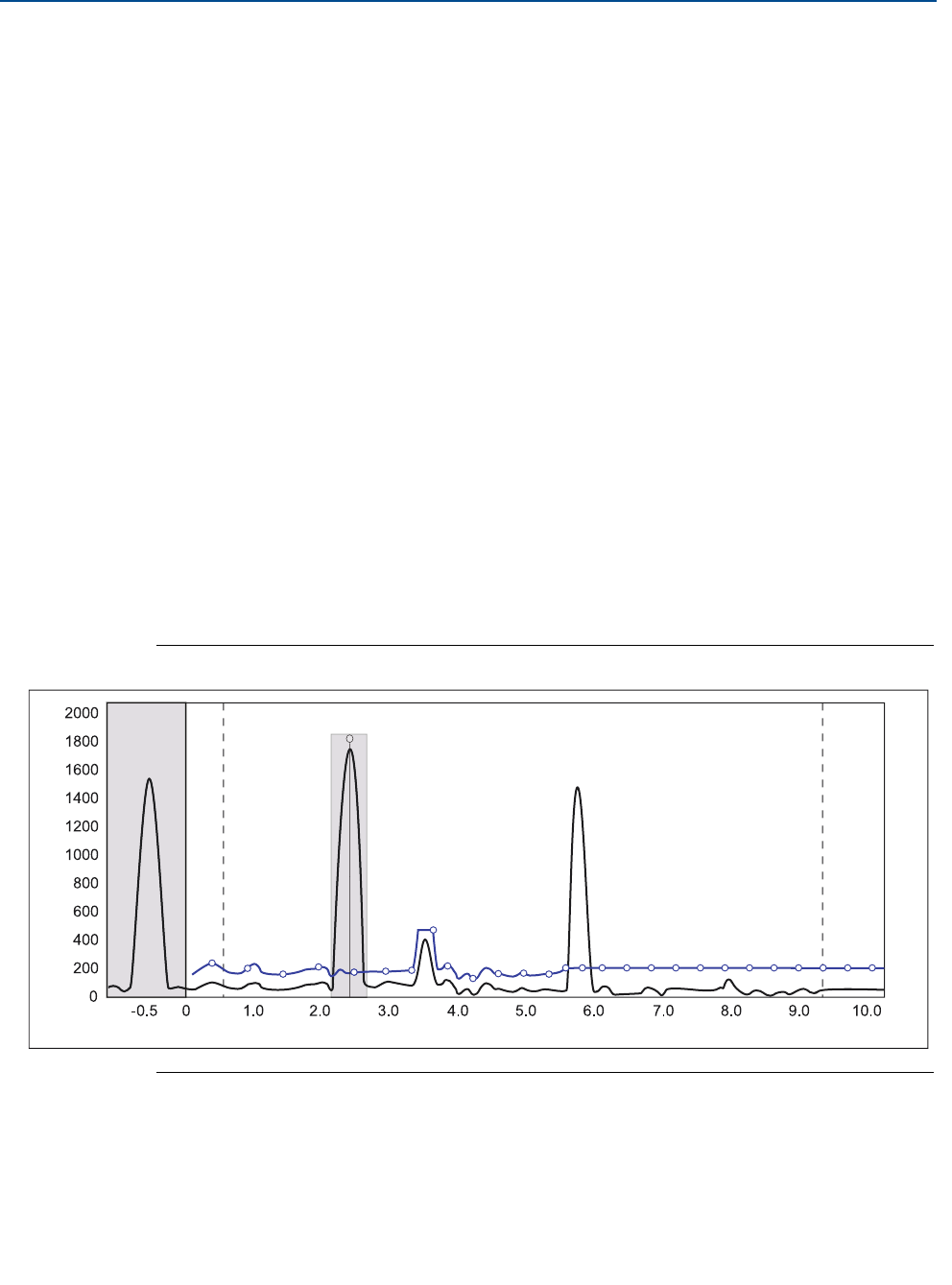
68
Reference Manual
00809-0700-4530, Rev AA
Section 5: Troubleshooting Procedures
September 2013
Troubleshooting procedures
Rosemount 5400 and 5600 Series
Various amplitude thresholds are used to filter out unwanted signals and pick up the different
peaks. The transmitter uses certain criteria to select which peaks correspond to the actual level
surface.
For GWR transmitters counting from the top of the tank, the first echo above the surface
threshold is considered the product surface. Pulses further away from the top, although above
the surface threshold, are ignored. Non-contacting radar transmitters use other certain criteria
to decide which type of pulse that is detected. Echoes found above the surface threshold might
be considered the product surface.
Surface threshold. This is the amplitude threshold for detection of the product level peak. The
surface threshold is designed as a number of individually adjustable amplitude threshold points,
the ATC.
Upper Null Zone / Hold Off distance. Measurements are not performed within the UNZ / Hold
Off distance, consequently, the UNZ / Hold Off can be used to avoid measurements above a
certain level, for example because of disturbances in the nozzle. For GWR, TNZ is the preferred
choice for handling disturbances in the near zone, since measurement is still possible in near
zone, see “Trim Near Zone (GWR transmitters)” on page 37 for activation.
False echo area (Rosemount 5400 Series only). False echo areas are set during the Measure
and Learn function, when the disturbing object is larger than the surface echo, see Figure 5-6.
The false echo area can be adjusted manually. See the Rosemount 5400 Series Reference Manual
(Document No. 00809-0100-4026) for details.
Figure 5-6. Rosemount 5400 and 5600 Series echo curve presenting all visible echoes
Reference
peak
Product
surface
Unknown
Hold Off
distance
Tank
bottom
Surface threshold / ATC
False echo




